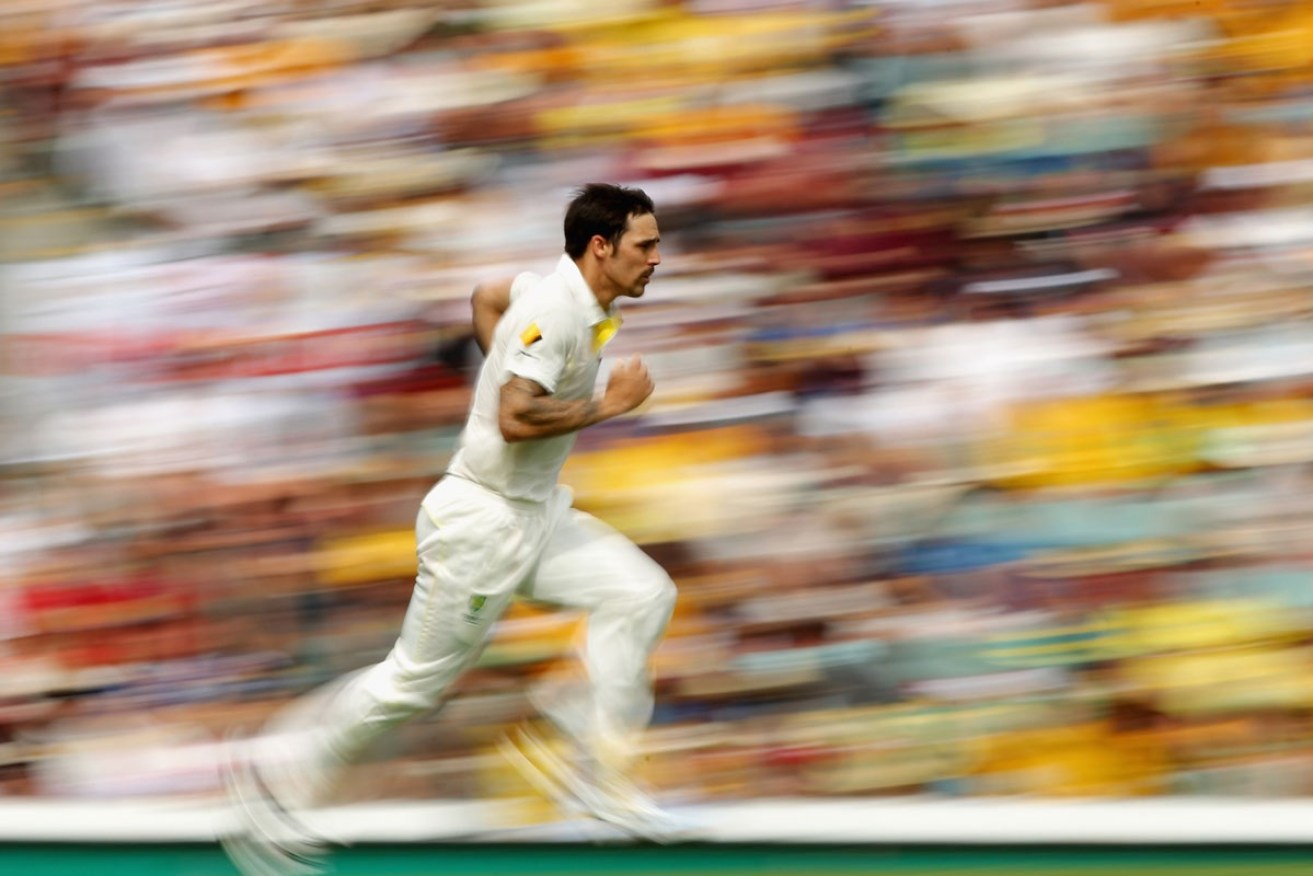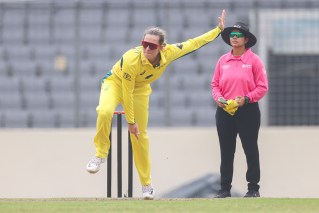Mitchell Johnson turns back the clock

Getty
Even the most calculated über-rational cricket fan must at times contemplate predestination.
In the Ashes alone there’s Bradman’s duck, the symmetry of the Centenary Test, Warne’s ball of the century, and much more besides to provoke thoughts that some events might have been scripted.
On Thursday it was the inevitability that Stuart Broad, Australia’s bete noire, would earn the headlines – even if they would not always be attributed to him. On Friday it was equally probable that the plaything of England’s less sympathetic supporters, Mitchell Johnson, would take centre stage. And didn’t he just.
An engrossing Test match of tense nip and tuck had progressed to the final over of the fourth session with England’s nose marginally in front at 1/55 chasing 295. Then Johnson exposed the technical flaw in Jonathan Trott’s alignment at the crease and he led a feast of England’s carcass with Australia swarming like a pack of manic hyenas.
Michael Carberry, Joe Root and Graeme Swann soon fell victim to the invigorated left-hander as England lost 7/36 in a collapse that gained momentum like an avalanche.
It was as if the Gabba had been sucked into a time machine, with Johnson transported back to his 2009 ICC cricketer of the year vintage and England to its 1990s nadir.
The delivery to remove Carberry in particular was a thing of beauty for fans of aggressive fast bowling.
After operating exclusively over the wicket to the southpaw, Johnson was switched around the wicket and given the singular instruction to fire the ball short of a length towards the batsman’s throat. Johnson obliged with a series of hostile deliveries that rocked the otherwise unflappable Ashes debutant. Eventually one was ripped at searing pace and an ideal line and length to force Carberry into fending to the cordon.
Up until the wicket of Trott on the stroke of lunch, Johnson’s inclusion in the match was under scrutiny, let alone his status as its defining figure.
He shared the new ball with the impeccable Ryan Harris and opened with a leg side full toss. ‘He bowls to the left …’ chimed the Barmy Army.
After three inconsistent overs Johnson was removed from the attack with doubts as to whether Australia would have the necessary firepower to remove England twice on a flat track.
Michael Clarke had faith though, and brought his wayward weapon back into the spotlight as soon as Jonathan Trott arrived at the crease, clearly to examine whether Trott’s tendency to fall victim to catches down the legside had followed him across the continents. Three overs of increasing menace from Johnson suggested Trott’s susceptibility remained but it was not yet apparent whether the bowler could produce the specific delivery required of the situation. As the clock ticked towards lunch and fielders hustled for one final assault on England’s batsmen, Johnson proved that underneath his ink there is still a golden arm.
After lunch Johnson, confident and clear-headed emerged a different beast.
Johnson proved that underneath his ink there is still a golden arm.
Gone was the errant line. Gone were the out-of-character attempts to guide the ball onto a line and length. Into their place came Johnson’s two uncomplicated stock deliveries: one fast and short, the other fast and slanting across the batsman. It was the KISS acronym in whites and a handlebar moustache.
Freed from the shackles of concentration, Johnson galloped in, hurled down missiles and reaped the rewards. His teammates in the field lifted, sensing their 295 was a veritable bounty with Johnson bowling with such brio.
His opponents wilted, unable to counterattack the rapid lefty or the niggardly Harris at the other end. For a session Australia bullied England into a corner and then picked off targets at will.
The theory follows that Johnson’s bowling reflects his batting and though runs for the talented lower order batsmen are no guarantee of wickets, how he bats can provide an accurate indication of the state of mind he is likely to find himself in with the ball. His first-innings 64 then will have served as a significant confidence boost for a confidence player and convinced him he belonged at Test level – for he was sure to have had doubts.
Credit also has to go to those around Johnson. Firstly his teammates, Ryan Harris in particular, for pressurising England into a mental state where they were unable to knock Johnson off his stride. Secondly, his captain deserves credit for resisting the urge to banish him from his thoughts after a poor opening spell. Thirdly, Craig McDermott, Australia’s bowling coach, was a visible presence on the boundary rope all afternoon, reassuring his charges and cajoling the best out of them on a surface that offered little encouragement.
It is too early to say if Mitchell Johnson is conclusively ‘back’, but this performance will guarantee an appearance in the second Test in Adelaide and he was always a monty to front up on his home track in Perth. By Boxing Day we’ll know a lot more about where Mitch is at, but for now, there is hope – and after enduring Ashes nightmares in 2009 and 2010-11, that’s a decent place to start.
Jonathan Howcroft is a writer and editor at Back Page Lead.








